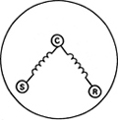
Figure 1. (Click on the image for an enlarged view.)
This unit is compact, built-in under the counter, and difficult to access. The first technician to respond to this situation told the tavern owner that he was familiar with common failures of this unique equipment, and after a quick look and observation of the operation of the unit (no meter tests), he explained to the customer that the compressor needed to be replaced and that he would have to order the necessary parts.
After the technician left, the customer called the office to request a second opinion. When you arrive, you also determine that this unit employs a PSC-operated hermetic compressor, fan-cooled condenser, and an evaporator fan motor and defrost system to maintain temperature and airflow. And, like the first technician, you determine quickly that air is circulating both inside and under the cabinet, and that the compressor isn’t starting. Figure 1 shows you the basic compressor wiring configuration you see after making sure the power supply is off, removing the necessary access panels, setting up a work light, and removing the cover over the PTC (positive temperature coefficient) relay and overload assembly.

Figure 2. (Click on the image for an enlarged view.)
Your results are:
1.From C to S, 6 ohms.
2.From S to R, infinity.
3.From C to R, infinity.
Your troubleshooting question: Have you confirmed the first technician’s diagnosis, or will you be advising the customer that the repair procedures will change?
Compare your answer with ours by clicking on the PDF link below.
For information on Jim Johnson’s HVACR technician training DVDs, go to www.technicaltrainingassoc.com/HVACRVideoStart.htm.
Publication date:05/09/2011


Report Abusive Comment